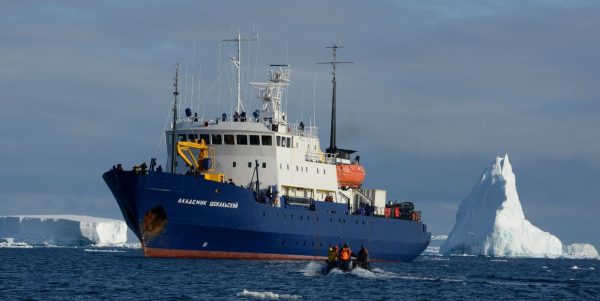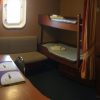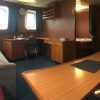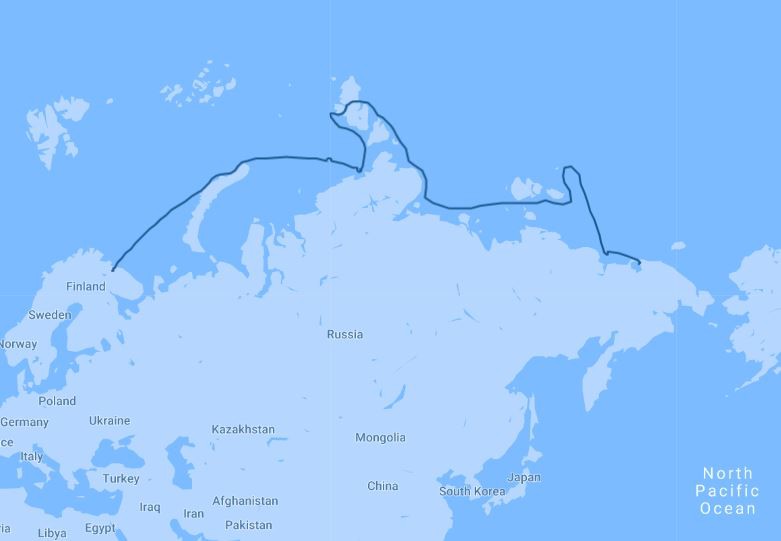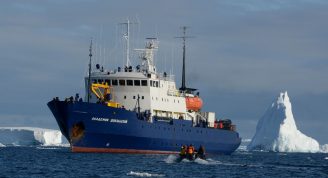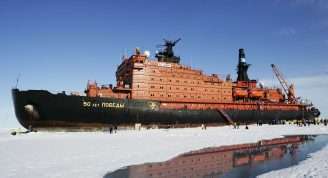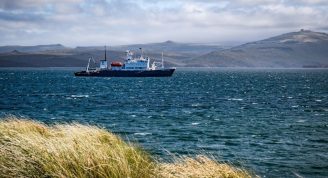Description
It was during the Vega Expedition of 1878 – 1880 that Swedish explorer Adolf Erik Nordenskiöld would prove, despite insurmountable odds, that it was possible to sail across the top of Russia to the Pacific and, ultimately, ports in Asia during the first transit of the Northern Sea Route. While hopes it would become a regular trading route were never realised, ice and weather conditions were too unpredictable, the Russians persisted and in 1914 the icebreakers Taymyr and Vaygach would complete the second successful transit.
In 1932 the Soviet Government established the Northern Sea Route administration to oversee the development of the passage. Bigger and more powerful icebreakers were built and a significant number of polar weather stations constructed to provide ice and weather updates for convoys transiting the route. The vast majority of these stations now lie in ruins, the data they once supplied now effortlessly downloaded directly from satellite and automatic …
It was during the Vega Expedition of 1878 – 1880 that Swedish explorer Adolf Erik Nordenskiöld would prove, despite insurmountable odds, that it was possible to sail across the top of Russia to the Pacific and, ultimately, ports in Asia during the first transit of the Northern Sea Route. While hopes it would become a regular trading route were never realised, ice and weather conditions were too unpredictable, the Russians persisted and in 1914 the icebreakers Taymyr and Vaygach would complete the second successful transit.
In 1932 the Soviet Government established the Northern Sea Route administration to oversee the development of the passage. Bigger and more powerful icebreakers were built and a significant number of polar weather stations constructed to provide ice and weather updates for convoys transiting the route. The vast majority of these stations now lie in ruins, the data they once supplied now effortlessly downloaded directly from satellite and automatic weather stations.
Recent changes in the Arctic summer sea ice means that it is now possible to navigate the Northern Sea Route during a brief window of opportunity without icebreaker assistance. These changes open a whole new world of Arctic history and wildlife to discover – one never dreamed of for those of us fascinated by these once off-limits, high latitudes.
Our expedition will follow Nordenskiöld’s route visiting the many islands and locations he discovered and described during his remarkable journey including the Severnaya Zemlya Archipelago, New Siberian Islands, Novaya Zemlya (New Land), Cape Chelyuskin and Nordenskiöld Archipelago, plus additional sites like the De Long Islands.
While the brief Arctic breeding season will be over, much of the region’s abundant wildlife will still be present. We are sure to enjoy encounters with Polar Bears and there is also an opportunity to observe three species of walrus (Pacific, Laptev and Atlantic), whales (Beluga, Bowhead and Narwhal) and Arctic Gulls (Ivory, Sabine’s and Ross’). Our team of on board naturalists will be working with you to ensure the best possible sightings and photographs.
Join us as we retrace history on this unforgettable voyage aboard our ice-strengthened Russian research vessel Akademik Shokalskiy. No stranger to this region, she has participated in Soviet convoys in during the late 1980s and completed a double transit of the Northern Sea Route with us in 2017.


